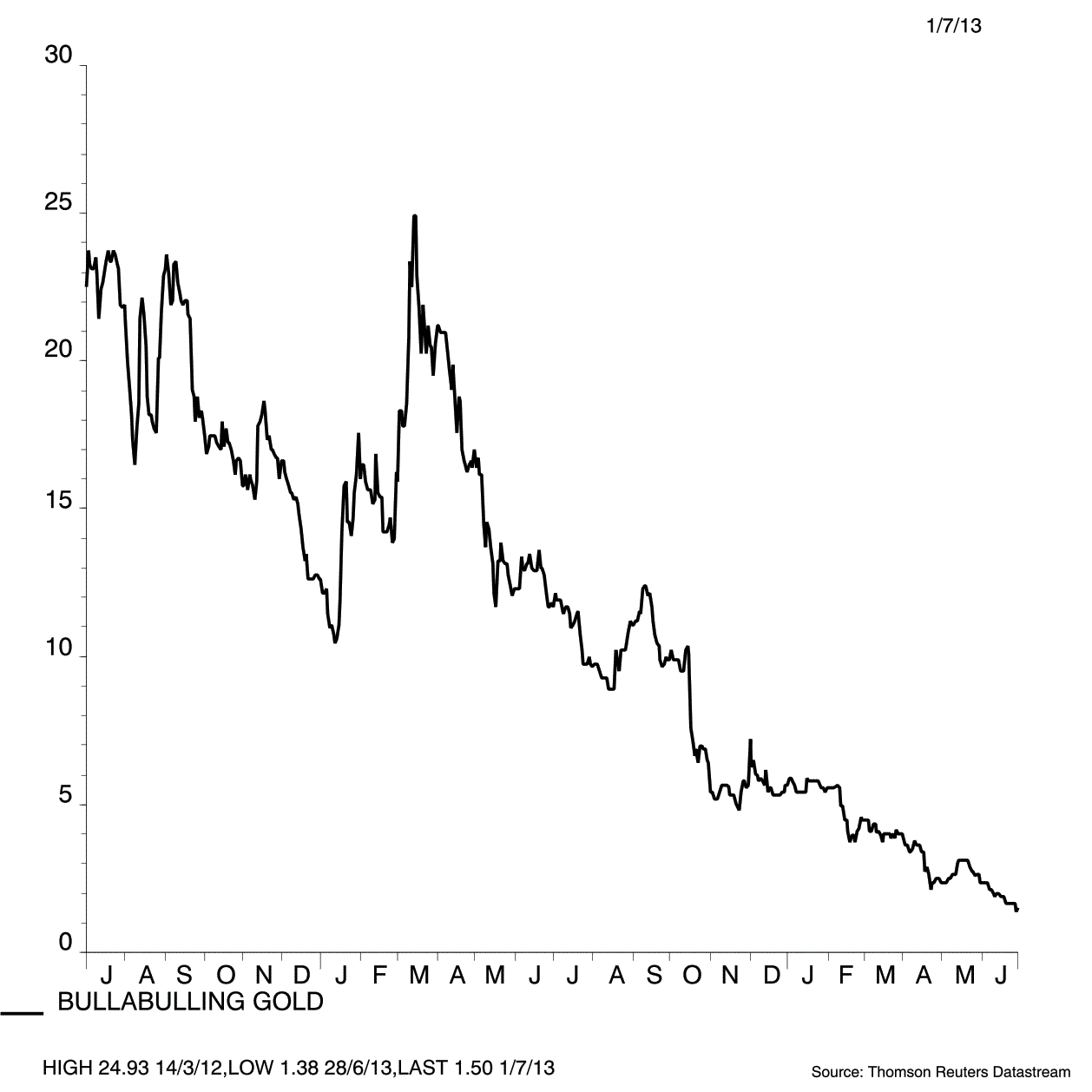It is odd to see Bullabulling Gold (BGL:AIM) jump 9.1% to 1.5p on a revised mine plan. A 15.2% internal rate of return (IRR) before tax is unattractive and we're surprised to see the economic study uses a gold price much higher than today's levels. Most studies use a conservative long-term gold price to stress test the project economics and we believe Bullabulling's study figure of $1,371 per ounce is far too high.
While the Australia-based asset would squeeze out a profit if in production today, Bullabulling still needs to raise a large amount of cash in order to construct the mine. With such minimal returns on offer, we don't believe the financing will be easy.
Gold is trading at $1,241 per ounce, more than 9% below the figure used in Bullabulling's study. Gold bulls may argue that the current price is only a temporary low and the metal is primed to bounce back up. We would disagree, believing that gold has further to fall - in line with a view presented in the 9 May issue of Shares where we debated the future for copper and gold.
Bullabulling's share price has been in freefall since it was created from the merger of GGG Resources and Auzex Resources in March 2012. Shares has been negative on the stock since January 2012 where we said to 'sell' at 14.25p. The stock has subsequently fallen by 89.5% in value. Our view was based on disappointing cost estimates for running its mine and failure to find someone to run the business. The heads of the merged businesses historically clashed over development plans, so the only way for the merger to have any chance of success was to bring in an independent board.
In February this year, we reiterated a 'sell' on Bullabulling at 5.88p after it published a more detailed economic study. Costs were higher and it slapped a 22% IRR on the asset. At the time, the study used a very high long-term gold price of $1,622 per ounce. We said analysts would use $1,300 per ounce in their models, a more realistic long-term price.
The sharp correction in gold since April means that financial models should really use a much lower price than $1,300. Amid growing signs that the US will withdraw its monetary stimulus programme as the economy strengthens, together with a slowly-improving view of the Eurozone, there are far fewer reasons for investors to be wanting to hold gold, deemed an 'insurance asset' in times of financial and political strife.
Bullabulling's new study shows a reduction in operating costs but higher capital expenditure. It needs A$440.4 million to start production. An additional $10.5 million is then needed for more mobile equipment as mining ramps up and the pit becomes deeper; and A$54.4 million is needed for sustaining capital.
The all-in cash costs - which include the cost of mining, royalties and sustaining capital - come to $930 per ounce. Against other gold mining projects in the world, that's not too bad. The bugbear for us is the large cost of bringing the project into production and the low rate of return. Our negative stance on the stock remains unchanged and we wouldn't be surprised to see long-suffering investors sell into any share price strength.




